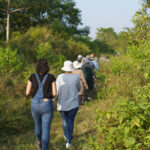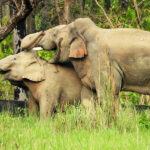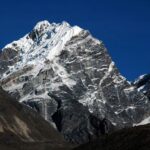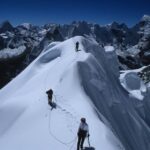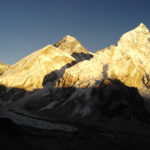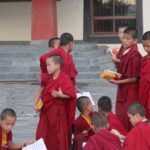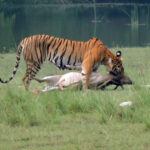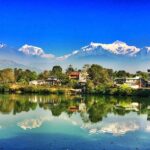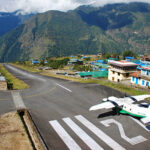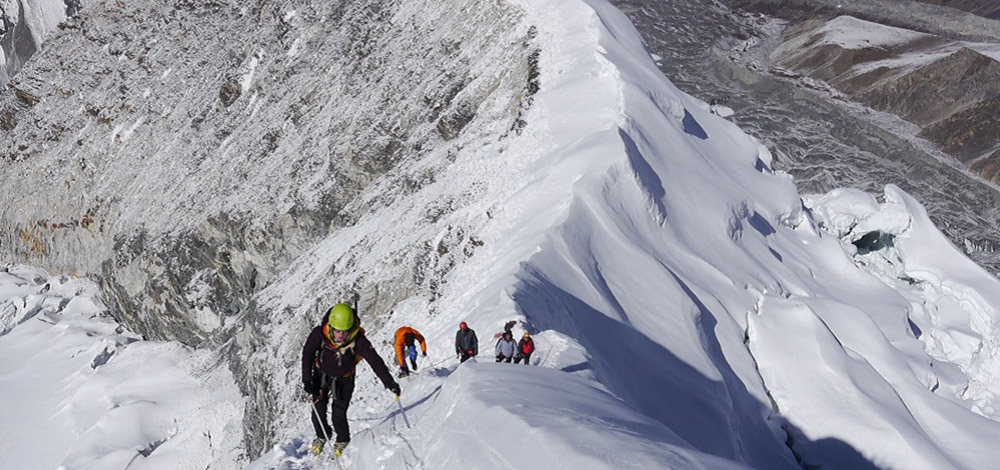
Island Peak Climbing in Nepal – Difficulty, Cost, Route & Best Time
Island Peak, also known locally as Imja Tse, is one of Nepal’s most famous trekking peaks, standing at 6,189 meters (20,305 feet) above sea level. Nestled in the heart of the Khumbu region, this majestic peak sits amidst a spectacular Himalayan backdrop including giants like Lhotse, Nuptse, and Ama Dablam. From its summit, climbers are rewarded with a 360-degree panoramic view of snow-capped peaks and glacial valleys.
Island Peak gets its name from its isolated appearance, rising from the middle of the Imja Valley like an island in a sea of ice. This peak is often used as a training climb for Everest aspirants and is a favorite among adventure enthusiasts who want a taste of mountaineering in Nepal without committing to a technically difficult ascent.
Is Island Peak Difficult to Climb?
While Island Peak is considered a “trekking peak,” it should not be underestimated. The climb is certainly manageable for well-prepared trekkers, but it presents its own set of challenges that require physical fitness, endurance, and a basic understanding of mountaineering techniques.
Key challenges include:
-
Glacier travel: You’ll navigate crevasses using ropes and ladders.
-
Steep ascents: Particularly the final 150-meter headwall before the summit ridge, which involves the use of fixed ropes and ascenders.
-
Altitude: At over 6,000 meters, the air is thin and altitude sickness is a real risk.
-
Cold weather: Night temperatures at Base Camp often drop below freezing.
Despite these challenges, with proper acclimatization, training, and the guidance of experienced Sherpas (like those from Getaway Nepal Adventure), many trekkers with no previous climbing experience have successfully summited Island Peak.
Can a Beginner Climb Island Peak?
Yes, a beginner with a good fitness level and strong determination can climb Island Peak. Many first-time climbers use this peak as an entry into high-altitude mountaineering. That said, this climb is not a casual hike—it demands preparation.
Ideal preparation includes:
-
Having experience with high-altitude treks (e.g., Annapurna Circuit, Everest Base Camp)
-
Learning basic mountaineering skills like using crampons, ice axes, and rope techniques
-
Following a structured fitness program at least 8–12 weeks before your trip
Most guided expeditions, including those offered by Getaway Nepal Adventure, include pre-summit training at Island Peak Base Camp where climbers learn how to safely ascend with fixed lines, use climbing gear, and move confidently on icy slopes.
How Much Does It Cost to Climb Island Peak?
The cost of Island Peak climbing depends on several factors such as the service level, length of itinerary, inclusion of Everest Base Camp trek, and whether you’re joining a group or going solo.
Average cost breakdown:
-
Budget expedition: $2,200 – $2,800
-
Standard package: $2,800 – $3,500
-
Premium climb with EBC trek included: $3,500 – $4,500
Not included in most packages:
-
Personal climbing gear rental (boots, crampons, harness)
-
Tips for guides and porters
-
Travel insurance (with helicopter evacuation)
-
Extra nights in Kathmandu
Tip: Choosing a professional and experienced company like Getaway Nepal Adventure ensures safety, quality service, and better success rates.
What is the Climbing Route for Island Peak?
The route to Island Peak follows the iconic Everest Base Camp (EBC) trail for much of the journey. This allows trekkers to acclimatize gradually and enjoy the rich cultural and natural scenery of the Khumbu Valley.
Standard route itinerary:
-
Kathmandu to Lukla (Flight) – Start of the trek
-
Trek to Namche Bazaar – Acclimatization day here
-
Continue to Tengboche and then Dingboche
-
Trek to Chhukung (4,730 m) – Another acclimatization point
-
Island Peak Base Camp (5,100 m) – Set up climbing base
-
Summit Day – A long push starting before dawn (1 AM) via High Camp, crossing glaciers, ascending the steep headwall, and finally reaching the summit
-
Descent to Chhukung and back to Lukla
Total duration:
Typically, the entire expedition takes 16 to 20 days, depending on whether you include side trips like Everest Base Camp or Kala Patthar.
What is the Best Time to Climb Island Peak?
The best time to climb Island Peak coincides with the two major trekking seasons in Nepal:
Spring (March to May)
-
Stable weather and mild temperatures
-
Blooming rhododendrons along the trail
-
Better snow conditions on the mountain
Autumn (September to November)
-
Post-monsoon clarity and dry weather
-
Cooler temperatures and crisp views
-
Lower risk of rainfall and landslides
Avoid the summer monsoon (June–August) due to slippery trails and poor visibility, and winter months (December–February) unless you’re prepared for severe cold and snow.
What Permits Are Required?
You’ll need the following permits to climb Island Peak:
-
Island Peak Climbing Permit (via NMA)
-
$250 (Spring)
-
$125 (Autumn)
-
$70 (Winter/Summer)
-
-
Sagarmatha National Park Entry Permit – NPR 3,000 (~$25)
-
Khumbu Pasang Lhamu Rural Municipality Permit – NPR 2,000 (~$17)
Permit costs are typically included in organized expedition packages.
Why Climb Island Peak?
Island Peak is not just about the summit—it’s about the journey. Here’s why it’s worth doing:
-
Gain real alpine experience without tackling extreme technical climbs
-
Ideal stepping-stone to bigger Himalayan peaks
-
Offers a chance to explore the Everest region, including monasteries, Sherpa villages, and glacial lakes
-
Opportunity to combine the climb with the Everest Base Camp trek
-
Standing on a 6,000-meter peak is a life-changing personal achievement
Training & Preparation Tips
You should start training at least 8–12 weeks before your expedition. Focus on building:
-
Cardio endurance: Running, hiking, swimming
-
Leg and core strength: Squats, lunges, planks
-
Stamina: Long hikes with a loaded backpack
-
Altitude conditioning: If possible, practice at high elevations
Also, try hiking in the boots you’ll use during the climb and carry a daypack to simulate trek conditions.
What Gear Do You Need?
Most companies provide group climbing gear (ropes, anchors, tents), but you’ll need to bring or rent:
-
Mountaineering boots (insulated, crampon-compatible)
-
Harness, helmet, crampons
-
Ice axe, ascender (Jumar), and carabiners
-
Down jacket, waterproof pants, thermal layers
-
Headlamp, gloves, sunglasses, and gaiters
Some outfitters, like Getaway Nepal Adventure, offer gear rental services in Kathmandu or Chhukung.
Final Thoughts: Is Island Peak for You?
If you’re looking for more than a trek—but not quite a full mountaineering expedition—Island Peak is a perfect in-between. It combines adventure, altitude, and challenge with relatively accessible climbing techniques. With the right preparation, guided support, and determination, Island Peak is absolutely achievable for many trekkers.
For those seeking to elevate their trekking experience to new heights—literally and figuratively—Island Peak is an unforgettable Himalayan adventure.

